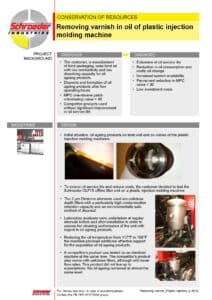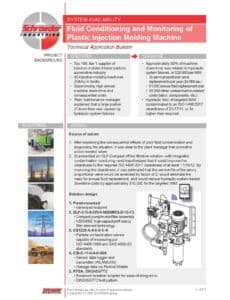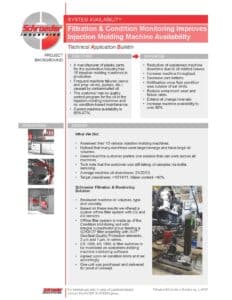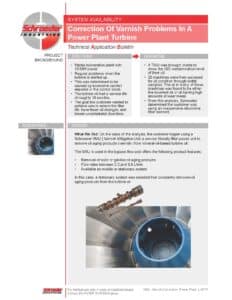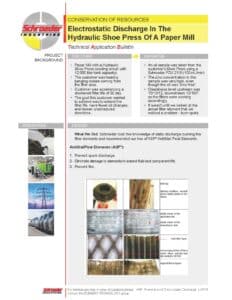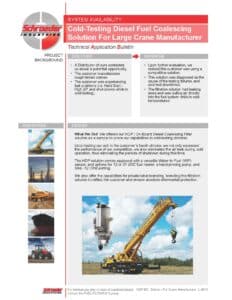David Saunders | February 28th, 2018
Image Courtesy of Cyclone Hydraulics
If you design hydraulic equipment and you’ve heard of a cyclone reservoir, you probably want one. But is it the best solution? If you haven’t heard of a cyclone reservoir, here is a blog and live video demo by Mike McVay on the topic.
There are many reasons why the cyclone reservoir can be one of the most impactful design decisions you could make. Incredibly small in size, deaeration characteristics, increased pump performance, cheaper oil changes, ease of plumbing, and automatic low-level shut off are some of the advantages. But before you order one, make sure you understand the design constraints so that you are certain it is the right choice for your application.
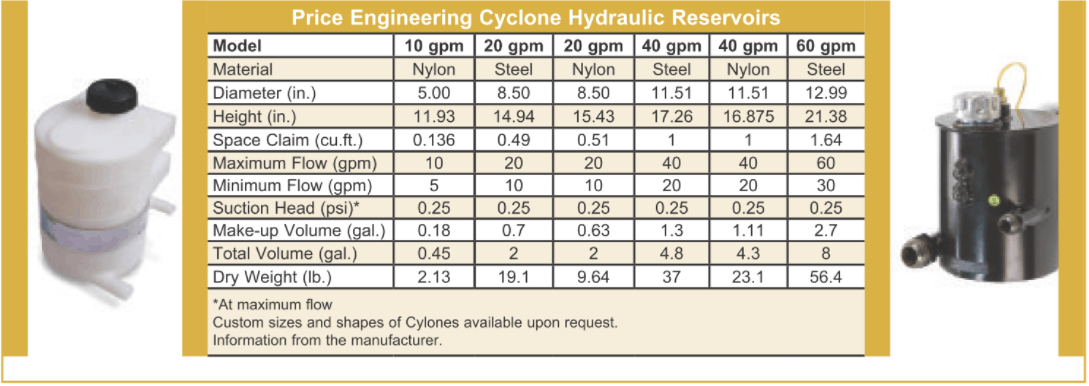
Constraint #1 – Flow Sensitivity
Traditional reservoirs are normally described in terms of internal volume, not flow rate. Cyclone reservoirs are described mainly based on specific flow rate capacities. They are available from below 18 gallons per minute to beyond 80 gallons per minute maximum flows. Cyclone reservoirs do, of course, have an internal volume number that could be given, but that figure would not provide an intuitive feel as to whether or not it is appropriate for an application. Especially based on traditional guidelines like 2.5 or 3 times the maximum pump flow. For instance – a 60 GPM reservoir could have an internal volume of merely 12-15 gallons!
When selecting a cyclone reservoir, you must know all of your hydraulic functions and flows and when they will be activated in relation to one another. It should be broken down into what flows are fixed, what flows are variable, and what the maximum and minimum will be for each port on the reservoir. These numbers should be reviewed by the manufacturer and. if necessary, confirmed to be acceptable via flow analysis and fluid computation simulations.
Constraint #2 – Differential Volume
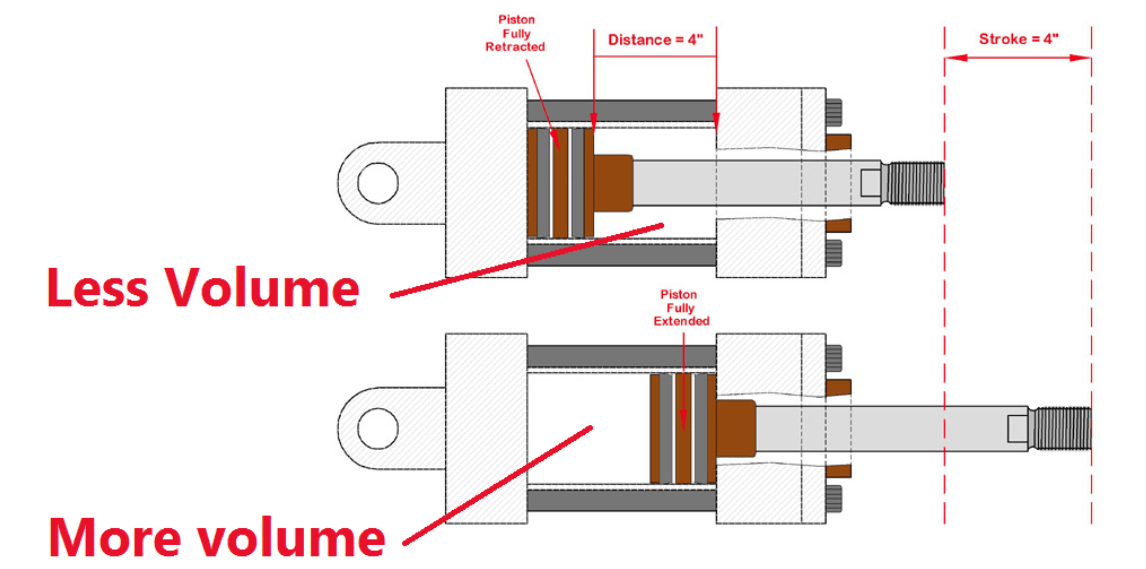
When a cylinder rod is extended, it is not displacing oil. When it is retracted, it is displacing oil. The oil that is displaced when cylinders are retracted has to go somewhere else in the system. That place is ultimately the reservoir. Any reservoir will have a breathable cap so that it can exchange oil volume with air volume from the environment without creating a vacuum or becoming pressurized.
The total volume of oil displaced when all cylinders are retracted is known as the total differential volume, or also commonly referred to as “cylinder deltas.”
The concern is that there has to be enough “extra” room in the reservoir for all of this oil to enter but not overflow. On the other hand, when all of the differential oil volumes are out of the reservoir (at the cylinders), the reservoir should not have a level that is too low to function correctly. Because cyclone reservoirs are relatively small and rely so much on predictable flow patterns, they have a small allowable differential volume compared to traditional larger reservoirs. The bottom line is simple – If you are considering a cyclone reservoir, know and check your differential volume with the manufacturer.
Constraint #3 – Filtration
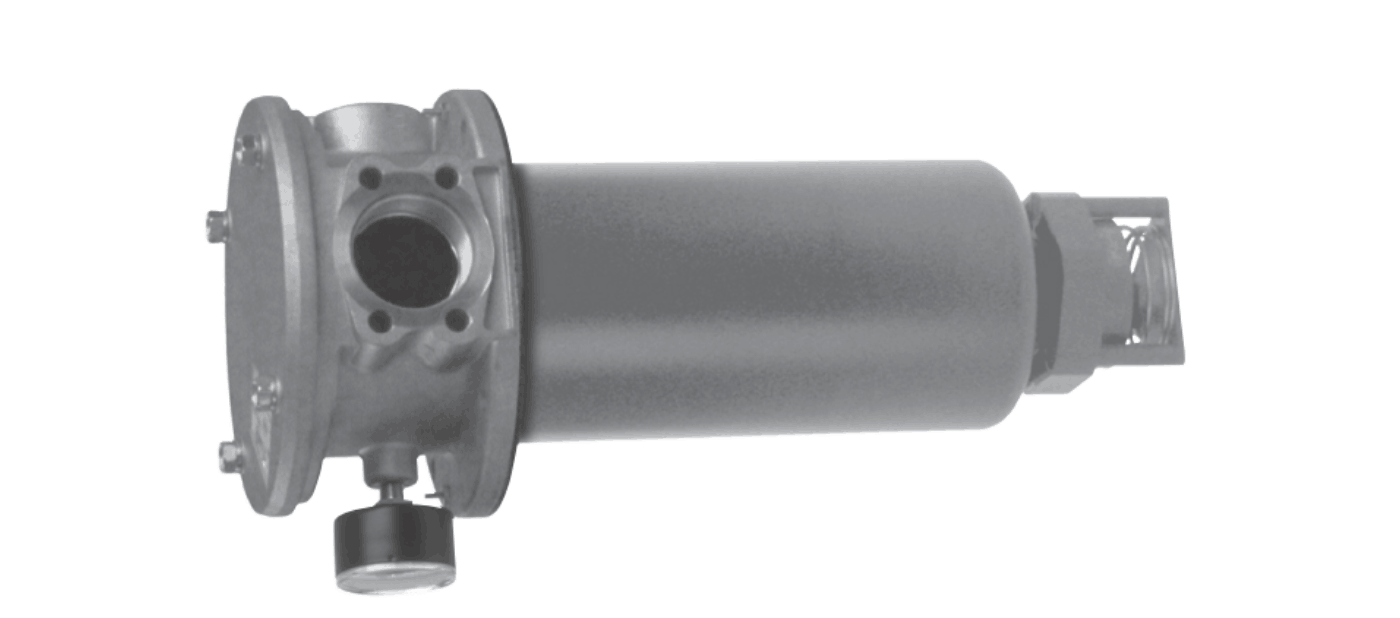
Many existing hydraulic equipment designs have in-tank return filters with traditional reservoirs. Because of the overall dimensions and the flow path of oil inside a cyclone reservoir, adding a return filter or suction strainer inside is not feasible.
Rest assured, though, that there will be no debris that gathers over time inside a cyclone reservoir like there is in a traditional reservoir. The flow is so intense that the inside of your reservoir will be “rinsed” constantly and nothing will have time to settle out. With adequate filtration elsewhere in the system, a cyclone reservoir contributes to improved overall system cleanliness because there is never a chunk of sludge that will all of the sudden get sucked into a pump suction port.
Constraint #4 – Gradeability
On mobile equipment, the ability to climb steep grades or tilt sideways on banks is often a design goal. With a traditional reservoir, the fluid level in all of these inclined situations needs to be analyzed so that it is not a possibility for the pump suction port(s) to suck air. The same is true for the cyclone reservoir, but the cyclonic action negates the effects of an incline to a certain extent. These small reservoirs are capable of handling angles approaching 45 degrees in many cases!
Other advantages:
Cyclone reservoirs can be custom designed for an application. Sizes in between those mentioned in the chart above are a possibility. Custom suction manifolds and integral shut off valves make plumbing a breeze. Multiple mounting configurations are also available.
An added benefit of the cyclone reservoir is “turbo-charging” pump inlets. Because of the cyclonic action, the oil is basically being flung into the pump suction lines. This improves inlet conditions and should increase pump life.
In summary, the cyclonic reservoir concept is revolutionary, but it requires extra attention to flow details. Do not make the mistake of applying this technology where it is not a good fit. The consequences will not be worth the perceived gains. Applied correctly, however, this technology is truly a game changer. Contact Cross Company for more information and to review your application!

